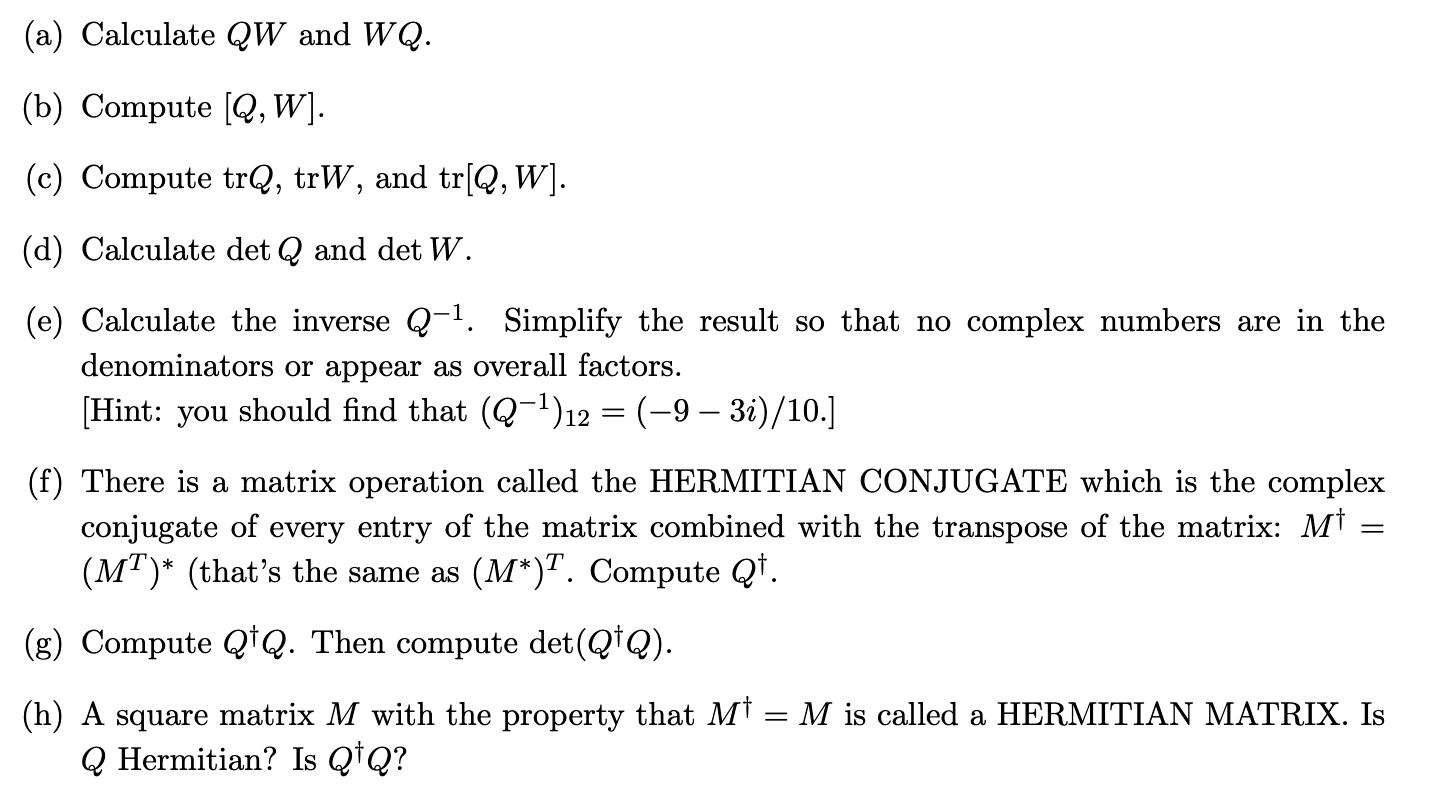Answered step by step
Verified Expert Solution
Question
1 Approved Answer
(a) Calculate QW and WQ. (b) Compute [Q, W]. (c) Compute trQ, trW, and tr[Q, W]. (d) Calculate det Q and det W. (e)


(a) Calculate QW and WQ. (b) Compute [Q, W]. (c) Compute trQ, trW, and tr[Q, W]. (d) Calculate det Q and det W. (e) Calculate the inverse Q-. Simplify the result so that no complex numbers are in the denominators or appear as overall factors. [Hint: you should find that (Q-)12 = (9 3i) /10.] (f) There is a matrix operation called the HERMITIAN CONJUGATE which is the complex conjugate of every entry of the matrix combined with the transpose of the matrix: M (MT)* (that's the same as (M*)T. Compute Q. = (g) Compute QtQ. Then compute det(QQ). (h) A square matrix M with the property that M = M is called a HERMITIAN MATRIX. Is Q Hermitian? Is QQ? = 1 - 2i 0 3i 1+i and i 1 i = ( + + +4) 3+i 0 W =
Step by Step Solution
★★★★★
3.63 Rating (150 Votes )
There are 3 Steps involved in it
Step: 1
To calculate the matrix products and traces as requested we first need to define the matrices Q and W Q 12i 3i 0 1i W i 1i 3i 0 1 Calculate QW Q multi...
Get Instant Access to Expert-Tailored Solutions
See step-by-step solutions with expert insights and AI powered tools for academic success
Step: 2

Step: 3

Ace Your Homework with AI
Get the answers you need in no time with our AI-driven, step-by-step assistance
Get Started


